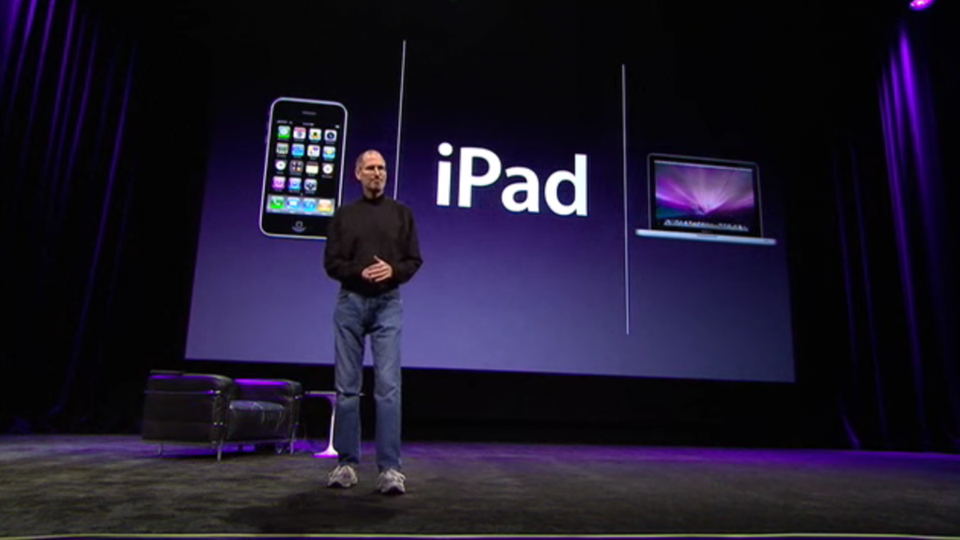The original post was released on imphotonow.com with URL: imphotonow.com/2010/01/delighting-views-on-the-ipad, and it has been very slightly edited to fit this blog format. Updates and revisions are commented out accordingly.
So the party is over, and everybody is waking up with the usually mixed feelings, debating whether the wait was after all better than the catch.
In the particular case of Apple, we have seen the usual comments ranging from the self-congratulation « I predicted it »’s to the disappointed over-expectations made on feature lists.
And after all, while the party is over, another wait just begins, with a new array of thoughts about how long the AppleStore queues will be in 60 days. Of the most interesting comments I could read (I switched off really quickly from « real time » video coverage that was both empty and self-flattering), a few key points shall imho cut through the obfuscatory “missing feature” bashing or the “I want it” enthusiasms.
It’s the user experience, stupid
It’s definitely not about features. Apple has by now made us used to products that are designed by engineers for the mass market, while most of the rest of the industry still sells products designed by mass marketers but at the end of the day suited for engineers.
I myself would have loved to see a camera in the device (even read intelligent comments like « after all, it’s just $1 additional to the BOM » – but they miss the point), then started to wonder about the practicality of the form factor for such a camera…
Apple’s omissions in the feature list may be disappointing, they are conscious by necessity, and have been certainly given lots of thoughts. Like Mashable’s Stan Shroeder, we might miss a big point if we think we would have done this better. Remember great design is about choice, and about deliberate omissions. Who recalls by now that the iPhone lacked copy/paste, MMS support, or GPS for a while ?
So I expect this all will be balanced or offset by the experiences in browsing, reading, emailing, as happened with the iPhone thanks to a superior design in each feature and a superb integration across them. Paradoxically, that last part reminds me of what Apple was trying to achieve already in 1994 on the Newton: I was lucky enough to work on the platform at the time and remember very well that despite mid-90’s hardware limitations (and probably a form factor error – apparently proven by the Palm Pilot later success), the NewtonOS was already bringing coherence and even cohesion across applications in order to strengthen the sum of the parts…
It’s the industrial approach, stupid
As I previously wrote, Apple products are designed by engineers. The real stunning part of this week’s announcement is how Apple is apparently pushing hardware/software integration to the next level. Very few people noted at the time that the iPhone was the first hardware platform deliberately dimensioned to host 3 consecutive major releases of an operating system. That the unique form factor choice (as opposed to the usual bet hedging, try-it-all spread from other phone vendors) allowed not only economies of scale, but also predictability for application vendors (anybody who developed S60 apps is probably smiling at these lines).
The same industrial approach prevails in the use of aluminum, where Apple now has gained great design skills through its line of MacBooks, as well as probably in the casing and shaping which gives the iPad an immediate proximity with the rest of the Apple family.
In the iPad case, Apple is again playing the one (new) size fits all game and we shall expect such form factor to be maintained across the following revisions (there will be revisions for sure, the whens and the whats will be secrets as always, but we can expect some of the missing items in our shopping lists to be ticked once Apple has adapted the user interface : a camera – probably front end for video calls -, mat charging – or transparent solar panels – …
Meanwhile, the form factor itself will open a vast array of possibilities when (re)designing applications for the iPad, as evidenced in the effort that Apple undertook themselves for existing applications as well as for the new iWork suite. (Incidentally, iWork on iPad will provide an interesting answer to some naysayers who have been claiming for the past decade that a good smartphone was a smartphone where you could edit Word documents, Excel spreadsheets, and PowerPoints on the go)
A few people noted the appearance of Apple’s own processor design to power the iPad while avoiding a drain in power. The chip must be very optimized in order to keep the device up for 10 hours, yet very powerful to keep the graphics flowing across such a large screen, and more difficult to compare with anything else by the still kicking megahertz myth.
It’s touted a game changing platform, but which game ?
Once again, focus was on the new iBook store as Apple will try to leverage iTunes presence as a distribution channel as they did for Apps. After all, songs, apps, and books have very similar characteristics as digital objects, in terms of size (and therefore speed of download / install) and distribution logistics. Monthly or yearly subscriptions might be another story, but again we can be sure Apple has thought about it.
More interesting to me is what we don’t see clearly yet. First, Apple seems to maintain its choice not to embrace native Flash capabilities. They may still claim their choice is based on performance issues, but to me it is more a question of control, already validated by the fact that YouTube for instance is bringing video to iPhones and soon iPads by Apple’s rules and format. At this point, remembering that .mp4 is a standard might help a bit, as well as to remember that most video capabilities in DSC’s were provided through a Quicktime output.
Therefore, yesterday’s keynote might be a sign that Apple is trying to reduce Adobe’s influence by narrowing Flash relevance, and Apple’s support of HTML 5 direct video embedding capabilities is another visible sign of control being regained.
Beyond game changing ambitions in the electronic book space and in the video streaming format war, another one got almost unnoticed but sounds very important to me, and it has to do with 3G.
I do not know yet about the extent of iPad’s 3G offering, and whether it will include voice or not. At least in the US, it seems that it will be a data plan only, with unlimited data definitely capped at $29.99 a month, and no real customer relationship with the carrier.
As such, Apple seems to be perfecting with the iPad the disintermediation game that started with the iPhone, when carriers lost control of distribution and customer relationship as well as of content and applications upsell, being relegated in the dumb pipe zone (and please make the pipe work as we are ready to saturate it both ways). When international telco deals are announced, we will know whether Vodafone and Orange have had enough muscle to retain some value, or if all their carrier app store ad content offerings will have been definitely ruined by prepaid, unlimited data plans, with not even voice to save anything.
As iPads are apparently unlocked, there is no reason why voice over IP would not follow — edit : this has just been confirmed —, with only disgusting data roaming charges left as a mean to extract some value (and achieve pissing off smartphone users)
Continuer la lecture de « Delighting Views on the iPad »



